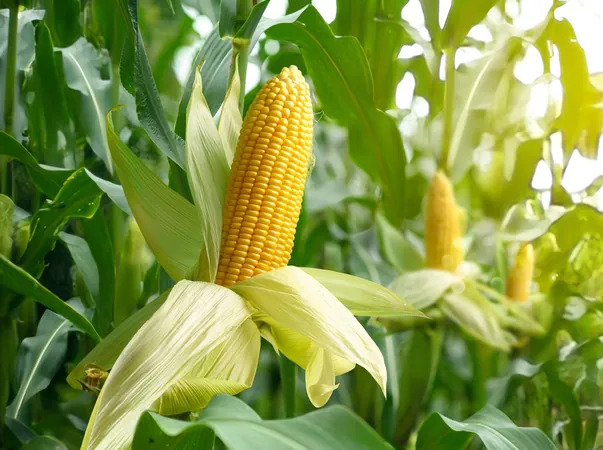
Revolutionary Discovery in Brazil Could Change Maize History Forever!
2024-12-07
Author: Sarah
Revolutionary Discovery in Brazil Could Change Maize History Forever!
Brazilian scientists have made a groundbreaking revelation that could alter our understanding of maize, commonly known as corn. This exciting discovery was made deep within the Peruaçu Valley of Minas Gerais state, where researchers unearthed ancient, partially domesticated maize samples that could change everything we know about the crop's history.
Traditionally, it was believed that maize was exclusively domesticated in Mexico by ancient farmers. However, the recent findings suggest that this plant may have been transported to South America before its full domestication occurred. If this theory holds, it would point to Brazil playing a pivotal role in the final stages of maize cultivation, contrary to the long-held belief that its history is rooted solely in Mexico.
The research, led by experts from the University of São Paulo (USP) and the Brazilian Agricultural Research Corporation (EMBRAPA), revealed that the maize specimens were initially discovered in 1994. At that time, archaeologists from the Federal University of Minas Gerais (UFMG) encountered these remnants but considered them to be poorly grown domesticated maize and overlooked the potential significance of their findings.
Recent genetic analyses have provided a fresh perspective on the issue. Researchers revisited the ancient plant material and identified genetic traits that link the samples to Teosinte—the wild ancestor of maize—indicating that these plants might have journeyed into Brazil about 6,000 years ago, long after Teosinte was first domesticated in Mexico around 9,000 years ago.
Details from the research published in *Science Advances* highlight the uniqueness of the samples, which were found 4,400 miles (7,150 km) from Mexico, showcasing primitive characteristics that have never been found so far from the crop’s original home.
The timeline reveals that while human populations existed in the Peruaçu Valley between 10,000 and 9,000 years ago, it wasn't until around 1,500 years ago that maize truly established itself in the region. The maize samples dating back to 1,010–500 years ago suggest that local Indigenous communities were actively involved in the plant's cultivation during a time just before European contact, potentially laying the groundwork for the diversity of South American maize we see today.
Interestingly, the Peruaçu Valley samples have shown a close connection to the Entrelaçado variety of maize found in the states of Rondônia and Acre. Professor Elizabeth Ann Veasey from ESALQ-USP pointed out how the ancient samples bear similarities to current varieties across Brazil and Uruguay, thus establishing a link between past and present agricultural practices.
Moreover, the journey of maize evolution—from wild Teosinte with its characteristic fewer than eight seed rows per ear to the modern varieties that boast eight to over 26 rows—underscores the significant advances in agricultural practices facilitated by local communities.
This extraordinary finding not only reshapes the scientific narrative surrounding maize but also carries profound cultural implications. The Peruaçu Valley is renowned for its ancient cave art that depicts crops, along with remnants of maize believed to have been used in ritualistic practices, such as offerings for the deceased.
Additionally, this new understanding of maize’s history raises serious geopolitical considerations. Should it be confirmed that Brazil was central to maize's final domestication, this would necessitate a re-evaluation of genetic resources and conservation strategies, alongside discussions regarding ownership rights in terms of international agricultural treaties.
In conclusion, this monumental discovery in Brazil has the potential to rewrite not just the history of maize itself but also how we view the interactions between ancient civilizations and their environment. As research continues, the implications of this study could resonate deeply across the fields of agriculture, anthropology, and international biodiversity ethics.
Stay tuned for further updates as this groundbreaking research unfolds!

 Brasil (PT)
Brasil (PT)
 Canada (EN)
Canada (EN)
 Chile (ES)
Chile (ES)
 España (ES)
España (ES)
 France (FR)
France (FR)
 Hong Kong (EN)
Hong Kong (EN)
 Italia (IT)
Italia (IT)
 日本 (JA)
日本 (JA)
 Magyarország (HU)
Magyarország (HU)
 Norge (NO)
Norge (NO)
 Polska (PL)
Polska (PL)
 Schweiz (DE)
Schweiz (DE)
 Singapore (EN)
Singapore (EN)
 Sverige (SV)
Sverige (SV)
 Suomi (FI)
Suomi (FI)
 Türkiye (TR)
Türkiye (TR)